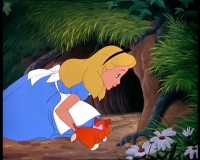The company vilified by some as being too closed to be successful in the long run has— in the long run, defined and distributed the dominant model for human-computer interaction. The reality is that all products that brandish the so-called open systems label are operating within the parameters set by Apple.
And while it’s certainly true that Apple didn’t create any of these interaction modes out of whole cloth, they codified them, shipped and sold the products that have turned them into defacto standards.
A de facto standard is a custom, convention, product, or system that has achieved a dominant position by public acceptance or market forces (such as early entrance to the market). De facto is a Latin phrase meaning “concerning the fact” or “in practice”.
In the beautiful silence emanating from Apple prior to the January 27, 2010 announcements a curious thing has happened. The full attention of the technical intelligensia has been focused on what’s missing from our personal and social computing experience. The announcements will be an interesting test of the ‘wisdom of the crowds.’ Theoretically, the predictions and analysis of the thousands of individuals writing about what will be announced could be distilled into either exactly the device Apple intends to release, or a blueprint for an even better device. My bet is that we will be surprised.
Of course, we can point to Xerox Parc, or Doug Engelbart, and say none of these things are new. But moving ideas from the lab to the street is a matter of knowing which dots to connect. In an interview, Jobs talks about recognizing the valuable waves of technology:
“Things happen fairly slowly, you know. They do. These waves of technology, you can see them way before they happen, and you just have to choose wisely which ones you’re going to surf. If you choose unwisely, then you can waste a lot of energy, but if you choose wisely it actually unfolds fairly slowly. It takes years.�?
In order to connect dots, you need to be in a position to do so. Sometimes we tend to overlook the core skill set that Apple has amassed. Here’s Jobs talking about what Apple does:
“Well, Apple has a core set of talents, and those talents are: We do, I think, very good hardware design; we do very good industrial design; and we write very good system and application software. And we’re really good at packaging that all together into a product. We’re the only people left in the computer industry that do that. And we’re really the only people in the consumer-electronics industry that go deep in software in consumer products. So those talents can be used to make personal computers, and they can also be used to make things like iPods. And we’re doing both, and we’ll find out what the future holds.�?
So, while we live in an era of “organizing without organizations,” can we expect distributed organizations harnessing the crowd to produce, sell and ship products at the same level as Apple? Crowds have a difficult time indicating what should be left out— and this is a key to superior industrial design. Here’s Job’s on Apple’s design process:
“Look at the design of a lot of consumer products—they’re really complicated surfaces. We tried make something much more holistic and simple. When you first start off trying to solve a problem, the first solutions you come up with are very complex, and most people stop there. But if you keep going, and live with the problem and peel more layers of the onion off, you can oftentimes arrive at some very elegant and simple solutions. Most people just don’t put in the time or energy to get there. We believe that customers are smart, and want objects which are well thought through.�?
In 2007, Apple changed its name from Apple Computer to Apple. In some sense, this signaled the end of the era of the personal computer. The computer has begun its migration and blending into other devices— some existing, others yet to be invented. Here’s Jobs on where the revolution is going:
“I know, it’s not fair. But I think the question is a very simple one, which is how much of the really revolutionary things people are going to do in the next five years are done on the PCs or how much of it is really focused on the post-PC devices. And there’s a real temptation to focus it on the post-PC devices because it’s a clean slate and because they’re more focused devices and because, you know, they don’t have the legacy of these zillions of apps that have to run in zillions of markets.�?
While there have been tablet computers for quite a long time, they were primarily designed as an evolution of the personal computer. In thinking about Apple’s announcement, the previous frame of reference is wrong— just as it is for those who believe the iPhone is a telephone. In looking at what’s missing from our social computing environment, we think we know the set of dots that need to be connected. But if we sit with the problem long enough, a whole new set of dots will come into focus. Here’s Jobs on vision and design:
One Comment“There’s a phrase in Buddhism,�?Beginner’s mind.�? It’s wonderful to have a beginner’s mind.�?










